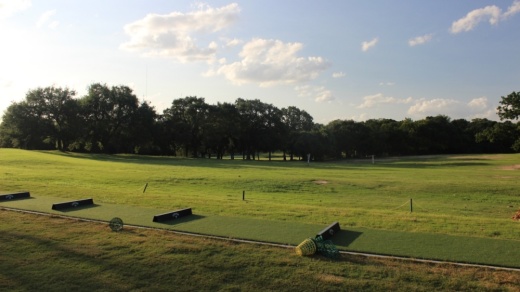The city has been working for months to rezone four separate UT-owned tracts after Austin City Council initiated a process to set “appropriate uses” for the properties last December. The lands, including the Lions course, or Muny, are longtime UT assets, but new zoning recommendations for the properties are being developed by city staff.
The largest of the four areas in question are the Brackenridge tracts, including the 141-acre Muny, the West Austin Youth Association's facilities, and dozens of acres along the Colorado River now home to a university apartment complex and field laboratory. The nearby Gateway Apartments property off West Sixth Street, the West Pickle Research Campus off MoPac to the north and the Montopolis Research Center on Montopolis Drive are also set to be rezoned.
Out of all the tracts, Muny has garnered the most attention since the city opened the rezoning to public input this spring. Muny is regarded by many community members as a civil rights and sports history landmark as well as an accessible and expansive public amenity, but the city's extended lease of the golf course from UT means the future of the course is uncertain.
The leasing situation and the property’s future have long been in question. Area residents and local organizations have debated over Muny’s continued operations or eventual purchase from UT.
However, years of stops and starts without a final result now mean “patience is out” among university officials, attorney Richard Suttle—representing UT in the city zoning cases—said during an Oct. 5 meeting of the Save Muny Historic District board. UT Regents could decide to move on from the course’s possible preservation as soon as this fall, regardless of impending zoning results.
“I don’t think the affinity for the golf course is shared by all those involved in the decision-making process,” Suttle said. “I can’t tell you that, no matter what, the golf course will be saved because I don’t think that’s the case.”
The city's internal rezoning review remains in progress after months of consideration and has partially been held up in recent weeks given a delay in receiving UT traffic data that could inform final recommendations. A related meeting between UT representatives and city planners had not taken place as of Oct. 19.
Whether Austinites will have any further opportunity to comment on Muny's future, an aspect of the process highlighted as essential by Mary Arnold, the chair of the Save Historic Muny District, also remains to be seen.
“Our goal is to make sure that the neighborhoods and golfers are included in some of the conversations," she said. "The December council motion ... included the wording that this should be a collaborative process.”
Interested residents were first given one-minute slots to share their thoughts on the Brackenridge tracts zoning during a virtual June meeting hosted by the city, an allotment Rosie Truelove, the Austin Housing and Planning Department director, said was likely "insufficient" and something the city may need to revisit before closing its zoning cases.
Development, housing questions
Although rezoning may not be necessary for UT to reshape the properties—an issue the city and university disagree on—a new zoning status could simplify development of the land.
The university may proceed anytime with projects related to its operations, such as existing student housing or research centers, while the city believes rezoning is required if a sale or lease for commercial, nonuniversity uses is to take place. The two entities set aside their differing opinions for the rezoning process in hopes of reaching an agreement on what is allowed on the tracts, regardless of educational connection, leading to concern that a final zoning label could make Muny a development target.
For now, Suttle said some of those involved are looking at ways to zone the Brackenridge tracts to support Muny's preservation and promote redevelopment of the adjacent riverside property to the south.
“My biggest fear is that ... a developer is going to look at it and say, ‘Green space needs to be on the lake, and the development needs to be on the golf course.’ That makes the most rational sense in real estate development. That scares me to death,” Suttle said. “We’re trying to do it differently and say, ‘Let’s entice the development on the lake to keep the golf course.’”
Muny's sale is another option on the table with uncertain prospects. The Muny Conservancy nonprofit was founded years ago with the goal of buying the golf course outright for preservation, and while tens of millions of dollars have been collected so far, the group has not raised enough to meet a price tag likely well north of $100 million. Suttle told conservancy members Oct. 5 that a previously floated bid of around $110 million is likely "very stale" as of this fall.





